Do You Choose Clean Water?
By Travis Loop
Do you choose clean water? If so, we need your voice. And the voices of your friends.
Clean water is important – for drinking, swimming, and fishing. We need it for our communities, farms, and businesses. But right now, 60 percent of our streams and millions of acres of wetlands across the country aren’t clearly protected from pollution and destruction. In fact, one in three Americans—117 million of us—get our drinking water from streams that are vulnerable. To have clean water downstream in the rivers and lakes in our neighborhoods, we need healthy headwaters upstream. That’s why we’ve proposed to strengthen protection for our water.
We hope you’ll support our clean water proposal. To help you do that, and get your friends to also voice their support, we’re using a new tool called Thunderclap; it’s like a virtual flash mob.
Here’s how it works: you agree to let Thunderclap post a one-time message on your social networks (Facebook, Twitter or Tumblr) on Monday, September 29 at 2:00 pm EDT. If 500 or more people sign up to participate, the message will be posted on everyone’s walls and feeds at the same time. But if fewer than 500 sign up, nothing happens. So it’s important to both sign up and encourage others to do so.
Here’s the message we’re asking you to let us post on your behalf: “Clean water is important to me. I want EPA to protect it for my health, my family, and my community. www.epa.gov/USwaters”
To sum up, you can participate through these two steps:
- Sign up to join the Thunderclap for Clean Water: http://thndr.it/1rUOiaB
- Share the link to the Thunderclap with your friends and followers so we get at least 500 people sharing the message:
a. Facebook
b. Twitter
c. Tumblr
Watch EPA Administrator Gina McCarthy talk about our proposal to protect clean water: http://bit.ly/1h5JgjW
Read about the proposal to protect clean water: epa.gov/uswaters
About the author: Travis Loop is the communications director for water at the U.S. Environmental Protection Agency. He chooses clean water for his kids and for surfing.
Editor's Note: The opinions expressed here are those of the author. They do not reflect EPA policy, endorsement, or action, and EPA does not verify the accuracy or science of the contents of the blog.
Please share this post. However, please don't change the title or the content. If you do make changes, don't attribute the edited title or content to EPA or the author.
Bagasse to the Rescue!
By Kristine Edwards
When I first visited the Crystal Mine site (part of the Basin Mining Area Superfund Site in Jefferson County, Montana) back in 2006, I was so shocked by how bad it looked that I vowed to myself to get it cleaned up before I retired.
Acid mine drainage from old mines is a big problem in historic mining districts across the U.S. The pH of mine water at the Crystal Mine is around 2.7, which is pretty acidic (on a scale of 1-14, with 7 being neutral pH and what we like to see in uncontaminated water), and carries significant concentrations of heavy metals. In order to treat the drainage, we’re working with our contractor on a treatment system.
An environmental contractor was working on mine sites in Peru when they came across a locally grown material that showed a lot of promise for treating acid mine drainage. It’s called sugar cane bagasse, a byproduct of sugar cane. The bagasse is a light weight fibrous material. Additional research at the University of Colorado (Boulder) using sugar cane bagasse showed promise even at low pH levels and low temperatures. Since the Crystal Mine site is at 8,000 ft elevation, it can get very cold there in the winter.
The bagasse is permeable and promotes biological activity by sulfate-reducing bacteria. This converts sulfate in the drainage to sulfide. Dissolved heavy metals like cadmium, copper, iron, lead, nickel, zinc combine with these sulfides to adhere to the fibers, leaving the water much cleaner.
We’re running a treatability study at the Crystal Mine to see if the sugar cane bagasse works better at treating the drainage from this site than the typical methods. The manure and hay, a step in the process, are coming from a nearby barn and the aged wood chips and saw dust are from a local post and pole operation. So, even though the sugar cane bagasse is coming from Louisiana, we’ll be using some local materials as well.
This will be a test that, if successful, could simplify treatment of acid mine drainage at other remote mine sites in this region. It would also lower maintenance costs, if it works the way we hope it will. The study will run from mid-June to October, and then it will take us about a month to interpret the results.
I hope to have a make a decision on how to clean up the site and the design plan in place by June 2015. The Superfund cleanup process can be long and it’s taken several years to complete the investigation of the site. This treatability study with the sugar cane bagasse will help us design the final treatment system and could be something EPA or the state could use at other mine sites with acid mine drainage. I could then retire with a feeling of having accomplished my goal of cleaning up this site, and perhaps help clean up other sites as well!
About the author: Kristine Edwards, a “native” Montanan, has always loved hiking, fishing, horseback riding and backpacking in the mountains of Montana. She was hired by EPA out in Seattle (EPA Region 10), and was fortunate to eventually make it back to Montana after 4 years in Seattle and 3 years in Denver.
Editor's Note: The opinions expressed here are those of the author. They do not reflect EPA policy, endorsement, or action, and EPA does not verify the accuracy or science of the contents of the blog.
Please share this post. However, please don't change the title or the content. If you do make changes, don't attribute the edited title or content to EPA or the author.
(A Student’s) Green Shopping Guide
By Stephanie Businelli
Congratulations! You fought through your SATs, got your diploma, and are now heading towards “the best four years of your life,” more commonly known as college. If you’re a student who plans to live on campus, now is the time to start shopping for your new home, one that will be entirely yours (with the sole exception of that roommate you’ve been getting to know over Facebook this summer). While you’re buying supplies that will make your dorm reflect the uniqueness that is you, don’t forget to keep your permanent home – planet Earth – in mind. Making your dorm ‘green’ may seem as impossible as fitting all of your worldly possessions into that tiny room, but it doesn’t have to be! Try asking yourself these questions while you shop for your college dorm essentials:
- Can you buy it used? Head to a consignment store before you rush into major purchases. Many items on your list (especially larger ones like furniture) can be found secondhand at a lower price while keeping that “just as good as new” quality.
- Is it reusable? Rather than buying single-use items, buy those that have a longer shelf life. A single glass plate can replace countless paper ones that ultimately end up in the trash.
- Does the company promote sustainability? While shopping, look for brands that make green products. EPA has programs that can help you shop and live green, including ENERGY STAR, Water Sense, and Design for Environment.
- Is it made of recycled materials? Create a recycle ripple effect by buying supplies that use recycled materials. Your purchase will encourage manufactures to make more of these recycled-content products available and help conserve our precious natural resources.
- Is it locally produced? Products made locally require less transportation, requiring less fuel use and reducing their overall environmental impact. Not to mention, you‘ll be supporting businesses in your community!
EPA estimates that 42% of U.S. greenhouse gas emissions are associated with the energy used to produce, process, transport, and dispose of food and goods. By making your dorm green (in practice – color is completely optional), you’re working towards a more sustainable future. Your actions can have a huge effect! For more information and additional ideas check out Think Green Before You Shop.
About the author: Stephanie Businelli is a biological basis of behavior major and environmental studies minor at the University of Pennsylvania. As an intern for the EPA Communications Services Staff in the Office of Resource Conservation and Recovery, she likes to brainstorm green dorm ideas she wishes she had known as a freshman. She’s currently offering a hefty reward for the first person to create a (environmentally-friendly) time machine.
Editor's Note: The opinions expressed here are those of the author. They do not reflect EPA policy, endorsement, or action, and EPA does not verify the accuracy or science of the contents of the blog.
Please share this post. However, please don't change the title or the content. If you do make changes, don't attribute the edited title or content to EPA or the author.
By Stephanie Businelli
It’s that time of year again! The summer is slowing down and if you are a high school graduate heading to college, chances are you are frantically buying items from that (never-ending) list of dorm essentials. Before you head out to another store, be sure to check out our new Green Your Dorm (or Home!) Pinterest board. Find easy do it yourself (DIY) projects that can help you recycle objects you have around the house while crossing items off of your shopping list. You’ll find green ways to create cork boards, jewelry holders, air fresheners, and more. Aren’t shopping for dorm supplies this summer but feel inspired? These DIY ideas are great for your home as well!
Why are we sharing this information with us? We need your help to reduce these numbers:
· Americans threw away 250,000,000 tons of trash in 2012.
· 134,000,000 tons of that trash ended up in landfills and incinerators.
Your actions can have a huge effect. Be sure to check out our Green Your Dorm (or Home!) Pinterest board before you go shopping this summer.
About the Author: Stephanie Businelli is a biological basis of behavior major and environmental studies minor at the University of Pennsylvania. As an intern for the EPA Communications Services Staff in the Office of Resource Conservation and Recovery, she loves all DIY projects, especially those that help her protect the Earth (and her bank account).
Editor's Note: The opinions expressed here are those of the author. They do not reflect EPA policy, endorsement, or action, and EPA does not verify the accuracy or science of the contents of the blog.
Please share this post. However, please don't change the title or the content. If you do make changes, don't attribute the edited title or content to EPA or the author.
EP…Yay
By Gyeongbae Jung
It’s 8 AM. I wake up, shower, put on some clothes, and struggle to find matching socks as I wonder why I didn’t to go to bed earlier. The struggle continues as I get ready to bike to my internship at EPA. I’m not a very good biker, but I lie to myself every morning about how good I am to convince myself to make the trip. I bike past Adams Morgan, Dupont Circle, downtown, and the myriads of tourists taking selfies in front of the White House.
Interning at EPA this summer has been a bit surreal for me. I remember I used to stare at these big marble buildings in total awe when my family visited D.C. years ago. Mini me would try to picture what they would look like from the inside and, well, I’m here now. My childhood wonder and imagination have quickly been replaced with rows and rows of doors that lead to unknown offices filled with cubicles, employees, and the hopes and dreams of the American people. As I do my daily walk upstairs to my office, I can’t help but imagine how many people have done the same before me.
I’m an intern at the Office of Web Communications (OWC), or “the office of extreme Facebooking” as my friends would like to call it. I figured nothing would have prepared me more for this internship than the hours I spent procrastinating on social media during finals. But, honestly, that’s a very shallow way to describe the important work this office does. OWC synthesizes content and news, and shares it with the public through various social media channels. According to the American Press Institute, 44% of Americans receive their news through social media. As peoples’ dependence and connectivity to the internet continues to grow, so will the importance of modern media outlets as a way of sharing information with the public. OWC helps the public learn about environmental news and information in 140 characters or less.
Today is the last day of my internship at the EPA. It’ll be 8 AM tomorrow, I’ll wake up, shower, put on some clothes, and once again struggle to find matching socks. I’ll try to lie to myself again, but this time about how I won’t miss the intern struggle. I feel like this time my morning lie won’t be very effective. I sincerely loved my time here, the work I did, the people I met, and the cause I supported. People call it the EPA, but for me it’ll always be the EP….yay.
About the author: Gyeongbae Jung is a sophomore at American University studying environmental science. He works as an intern in the EPA’s Office of Web Communications.
Editor's Note: The opinions expressed here are those of the author. They do not reflect EPA policy, endorsement, or action, and EPA does not verify the accuracy or science of the contents of the blog.
Please share this post. However, please don't change the title or the content. If you do make changes, don't attribute the edited title or content to EPA or the author.
By Apoorva Rangan
Reducing greenhouse gas emissions has evolved into a problem on a scale that no nation can afford to fight alone. There are over 190 countries. Their boundaries may be fixed, but their people breathe the same air. No matter which country contributes the most or the least to the carbon dioxide burden, all nations suffer together.
During a time when there are major differences between developed and developing nations as how to mitigate climate change, my brother and I launched Project Jatropha, an international collaboration aimed towards alleviating rural poverty and environmental destruction by promoting the biofuel shrub Jatropha curcas.
Project Jatropha provides poor farmers in southern India with enhanced technical assistance in the utility and productivity of biofuels in ways that are environmentally sustainable and economically rewarding. Additionally, this project provides a successful medium in which young people across the globe can collaborate on the implementation of sound initiatives that provide environmental and monetary benefits to impoverished farmers in need.
In 2009, Project Jatropha was awarded the Environmental Protection Agency’s (EPA) Presidential Environmental Youth Award (PEYA). The PEYA program recognizes youth who promote environmentally-conscious awareness of our nation’s natural resources and encourages community involvement in sustainability efforts.
Each year, one outstanding project from each of EPA’s ten regional offices is selected for national recognition. The new projects awarded continue to be impressive. To be one of the lucky recipients of this award is truly one of my biggest accomplishments as an environmentalist. This honor has given Project Jatropha invaluable visibility and exposure. More importantly, the recognition from this award has helped raise awareness about how community action is key to creating essential strategies the benefit our global community and environment.
Since receiving the award, Project Jatropha has launched a variety of sister projects focused on environmental education, solar energy programs and kitchen gardens. My experience as an environmentalist has shown me that climate change is a problem on the scale that no entity can afford to fight alone. Because collective efforts can make a difference, the environmental education and stewardship of young people is undeniably crucial in the fight to combat global warming.
About the author: Apoorva Rangan is studying Science and Management with a biotechnology sequence at Claremont-McKenna College in California. She is currently interning at the Office of Public Engagement.
Editor's Note: The opinions expressed here are those of the author. They do not reflect EPA policy, endorsement, or action, and EPA does not verify the accuracy or science of the contents of the blog.
Please share this post. However, please don't change the title or the content. If you do make changes, don't attribute the edited title or content to EPA or the author.
Staying Sustainable at School
By Maddie Dwyer
As fall approaches, there’s one thing on every college kid’s mind: living on campus. Whether you’re excited or not, dorm life is coming, and it’s time to start getting ready. For me, this means using the things I learned at EPA this summer. Below are some tips for green living, which can help you whether you’re living in a dorm or an apartment, or at home.
- Saving Energy: It’s easy to save energy by making a few simple changes to your routine. Remember to always turn off the lights when you leave your room. If you’re lucky enough to have air conditioning, and the luxury of controlling it, make sure it’s not left on if no one’s around.
- Conserving Water: There are lots of ways to use water efficiently. Take shorter showers and turn off the water when you are using soap, shaving, or brushing your teeth. Also, fixing leaky faucets is an important way to reduce wasted water.
- Reducing Waste: College is a great time to get into sustainable habits. Make a commitment to recycle everything you can, even if it means carrying recyclables until you find a recycling bin. Most campuses offer green dining options, like reusable take out boxes, glasses, and silverware. Take advantage of all the green options your school has to offer!
- Getting Involved: Every school is different, and will have different environmental issues to address. For example, as part of the Chesapeake Bay watershed, my school is working to construct bioswales to filter run-off before it reaches the bay. Check out EPA’s resources for students looking to be greener at school. Whether you are advocating for safer cleaning products or encouraging energy efficient appliances, your school will be better off with your involvement.
- Make a Green Agreement with Your Roommate: Helping one another is a great way to make both you and your roommate more sustainable. Ask if it’s okay to unplug each other’s unused electronics, do laundry together, and figure out a schedule to keep the lights and AC off. I’ve been lucky to have lovely roommates and other amazing friends who are committed to green living, and it has helped me to become more sustainable every day.
So when moving back to campus, be sure to keep these tips in mind and have a wonderful, sustainable school year!
About the author: Maddie Dwyer studies environmental science and policy at the University of Maryland. She works as an intern for EPA’s Office of Web Communications.
Editor's Note: The opinions expressed here are those of the author. They do not reflect EPA policy, endorsement, or action, and EPA does not verify the accuracy or science of the contents of the blog.
Please share this post. However, please don't change the title or the content. If you do make changes, don't attribute the edited title or content to EPA or the author.
Working Together to Tackle Environmental Challenges
By Walker Smith
The United Nations Environment Program Compound in Nairobi, Kenya, where the first meeting of the United Nations Environment Assembly of the UNEP, or UNEA, was held.
As I sat in traffic on my way back to the Nairobi airport, I watched the children weaving between the old taxis and buses that clog Nairobi’s streets, breathing in the black plumes pouring out of the tailpipes. The sight was a powerful reminder of why I’d traveled to Nairobi in the first place – for the first meeting of the United Nations Environment Assembly of the United Nations Environment Program, or UNEA.
Over 160 nations came together at the first UNEA to address the critical environmental challenges facing the world today, like air quality, marine debris, illegal trade in wildlife, and hazardous waste. UNEA provided its participants with an opportunity to discuss, learn, negotiate, and, most importantly, identify concrete ways to improve environmental quality around the globe.
One of the goals of the U.S. delegation attending UNEA was to ensure that this nearly universal group of nations strengthened the United Nations Environment Program’s (UNEP) efforts to improve air quality around the world. According to the World Health Organization, approximately 7 million people died as a result of air pollution in 2012 alone, making air pollution the world’s largest single environmental health risk. Poor air quality has a staggeringly high human cost, but it’s an issue we can, and must, do something about.
We’ve already made progress domestically and abroad. In the United States from 1970 to 2012, Clean Air Act programs have lowered levels of six common air pollutants by 72 percent! Internationally, the UNEP-led Partnership for Clean Fuels and Vehicles (PCFV) has worked tirelessly to remove lead from fuels since its founding in 2002. Through successful efforts to eliminate leaded gas in all but 6 countries, we avoid 1.2 million premature deaths per year – 125,000 of which are children.
Looking out the car window, I thought about the progress we had made through PCFV and efforts like it, but also of the steps still to be taken. Without these efforts, the children along the road beside me would be breathing in lead, a powerful neurotoxin with irreversible health impacts; however, many of them are still exposed on a daily basis to sulfur dioxide and black carbon from vehicles and from dirty stoves in their homes. And, in the United States, we still feel the effects of air pollution, generated from both domestic sources and across the ocean.
The world faces serious environmental threats, many of which cannot be solved by one country alone. Working through UNEA and with partners like UNEP, we’ill continue to move forward, finding new solutions and forming partnerships to help us tackle these challenges. I hope one day children in Nairobi, and around the world, will live and play in a cleaner, healthier environment.
About the author: Walker Smith has served as the Director of the Office of Global Affairs & Policy in the Office of International & Tribal Affairs since 2009. She previously served as Director of the Office of Civil Enforcement at EPA and as the Principal Deputy Chief of the Environmental Enforcement Section in the Department of Justice.
Editor's Note: The opinions expressed here are those of the author. They do not reflect EPA policy, endorsement, or action, and EPA does not verify the accuracy or science of the contents of the blog.
Please share this post. However, please don't change the title or the content. If you do make changes, don't attribute the edited title or content to EPA or the author.
Thanking America’s Sustainable Farmers
By Christina Badaracco
While working on education and outreach in EPA’s Office of Wetlands, Ocean, and Watersheds, I have been particularly inspired by our work with agriculture. As an environmentalist and a foodie, I love learning about the connection between healthy food and sustainable agriculture, and I am always eagerly looking to share that information with the public. This is why I’m excited about our efforts to interview and feature for the American public “farmer heroes,” who manage the nitrogen and phosphorus pollution on their farms and grow America’s food supply in a sustainable manner.
Through our “Farmer Hero” campaign, and through my own personal purchasing decisions as an informed consumer, I am supporting farmers who protect local land and water resources while undertaking the critical role of producing America’s food supply.
I was first exposed to the world of sustainable farming in college, and have since been inspired by the videos and writing of Joel Salatin, owner of Polyface Farm in Swoope, Virginia and a leader in the local food movement. I had the pleasure of visiting his farm last fall, and seeing the clever contraptions (e.g., the Eggmobile and Gobbledygo) and beautiful scenery I had read about in his books. Views of dirt-covered pigs, running around in the woods; ripe red tomatoes, grown without chemicals; and the engaging storytelling of our host were a treat and well worth the drive out from D.C.
In late May, I was thrilled to return to the area to meet other farmers who practice sustainable agriculture. I visited Robert Schreiber of Bell’s Lane Farm, and saw his on-farm composting operations and sales. I also met Gerald Garber from Cave View Farms, and learned how his livestock fencing and no-till farming reduce pollution runoff.
It is a delight to meet these farmers who have offered to share their stories: their goals for their properties and families, their innovative approaches for managing nutrients, and above all, their willingness to protect their local environment and the many lands downstream (http://www2.epa.gov/nutrientpollution/farmer-heroes-manage-nutrients-farm). I am encouraged to see EPA building better relationships with farmers to protect the same land, water, and food on which we all rely.
To Mr. Salatin and the other farmers who read this blog; who are conserving their resources, protecting their local waterways, and raising their animals and crops sustainably; and whom I one day hope to meet, we thank you. You are our heroes.
About the author: Christina Badaracco has worked in EPA’s Office of Wetlands, Oceans, and Watersheds since 2012. She works on communication and outreach projects regarding nutrient pollution, and is particularly interested in sustainable agriculture.
Editor's Note: The opinions expressed here are those of the author. They do not reflect EPA policy, endorsement, or action, and EPA does not verify the accuracy or science of the contents of the blog.
Please share this post. However, please don't change the title or the content. If you do make changes, don't attribute the edited title or content to EPA or the author.
Keeping Your Cool on a Heat Island
By Jessica D’Itri
It’s 9 a.m. and I’m on my way to my internship at EPA. I’m sweating through my clothes, my hair is plastered to my neck, and mascara is pooling under my eyes. The summertime heat and D.C.’s swampy humidity are bad enough, but an extra dose of suffering comes from the heat island effect.
Washington, D.C., like many developed areas, is a heat island: all of the pavement and buildings absorb and retain much more heat than less built up areas. This means they can be 1.8 to 5.4°F warmer on average, and up to 22°F warmer in the evening.
Heat islands aren’t only uncomfortable, they can be hazardous to people’s health. And, they can create a vicious cycle: higher city temperatures mean more electricity is needed to cool buildings, which in turn may increase air pollution. Also, when an extreme heat wave hits a city already stressed by the heat island effect, it can increase the risk of heat-related illness and death. This risk is worse for children, the elderly, and the ill, who are more vulnerable to extreme heat and polluted air.
EPA’s Heat Island Reduction Program suggests several strategies that cities can take to reduce summertime heat islands:
- Planting trees near buildings: Trees and other plants help cool the environment.
- Installing green roofs: Green roofs provide shade and remove heat from the air.
- Installing cool roofs: Cool roofs have a high solar reflectance that helps reflect sunlight and heat away from the building.
- Using cool pavements: Cool pavements reflect more solar energy, enhance water evaporation, or have been otherwise modified to remain cooler than conventional pavements (like those that allow water to permeate below the surface).
These tactics reduce demand for energy to cool buildings, which cuts carbon pollution and lowers bills. Using these cool technologies reduces the heat island effect, helping everyone stay cool.
The city heat can be a real nuisance (especially when trying to look professional for work!), but it can also be dangerous. Luckily, there are plenty of things that can be done to combat the heat island effect and keep safe in the heat. Listening in on heat island webinars and calls, I’m excited to hear about how communities are taking action to make life safer and more comfortable for residents. There’s a lot we can do as individuals and communities to reduce heat island, and those efforts can add up and have a big impact for us and the environment.
And there’s some good news for D.C. The District Department for the Environment recently created a Green Building Fund Grant Program, which has several goals, including assessing the health impacts of urban heat islands in this city. So, hopefully, future interns will benefit from this research and resulting policy changes. What is your city doing to reduce the heat island effect?
About the author: Jessica D’Itri is a Master of Public Policy student at the Gerald R. Ford School of Public Policy at the University of Michigan. Prior to attending the Ford School, she served as an environmental educator with Peace Corps Nicaragua. She is interested in learning how communities and local governments can implement policy to best benefit people and the environment.
Editor's Note: The opinions expressed here are those of the author. They do not reflect EPA policy, endorsement, or action, and EPA does not verify the accuracy or science of the contents of the blog.
Please share this post. However, please don't change the title or the content. If you do make changes, don't attribute the edited title or content to EPA or the author.

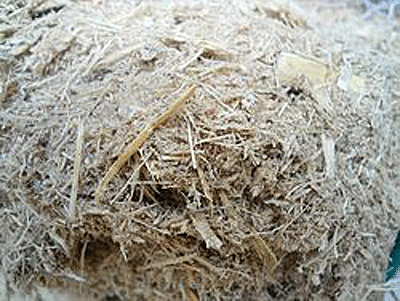
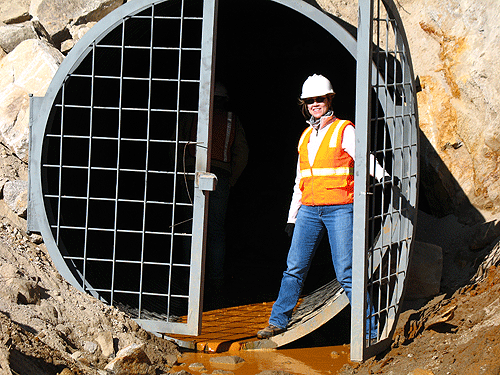
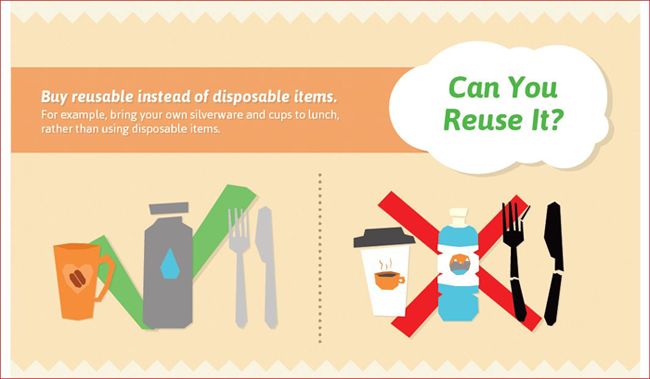
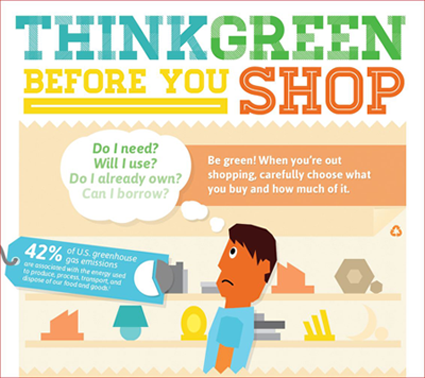


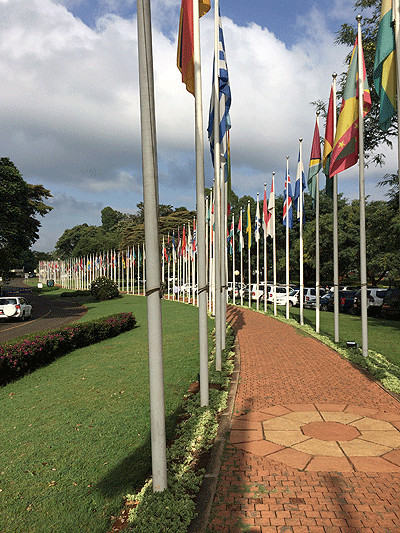
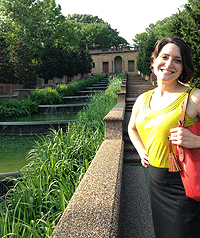
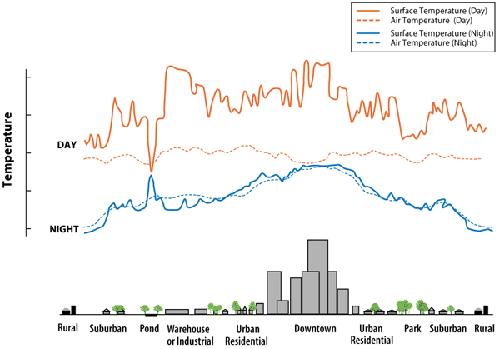
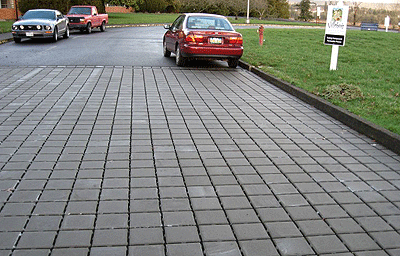
Permalink | No Comments